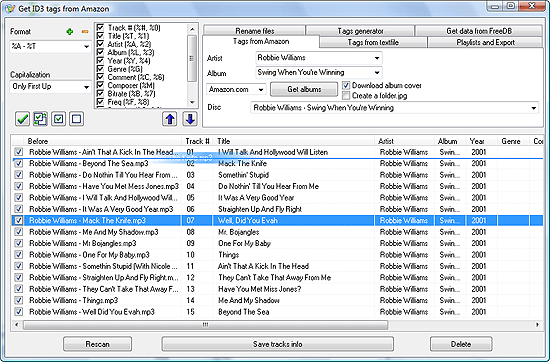


The metadata loader can also parse and load tags from path components, such as folder or file names. The Tag Editor supports the automatic importing of audio metadata from online databases, such as MusicBrainz, AcoustID, CoverArt, etc. IMPORTING TAGS FROM ONLINE DATABASES, PATH COMPONENTS, MUSIC AND ITUNES Read More: Export to Text and CSV files > Read more: How to rename files with the use of audio metadata > Spreadsheet format allows you to check, edit, and automatically standardize multiple filenames in a single table.įile names can be changed in auto or manual mode as well. Tag Editor is ideal for editing and renaming files with the use of audio tags. Read More: Manage Album Covers in the Tag Editor > The app also can load album artworks from local folders automatically or manually. So, select a few artwork cells, and choose Edit / Load Tags / From Network. The Tag Editor can search for artworks in online databases, such as CoverArt, Discogs, MusicBrainz, AcoustID, etc. Read More: Tagging with Find and Replace > Tidy your entire audio collection with both auto and manual methods quickly and easily! It can significantly speed up workflow and be incredibly convenient for laptop users. You can load, change, and control all changes in one spreadsheet window using the keyboard shortcuts. Apply a Batch Tagging, Cut, Copy, Paste, Undo, Find and Replace, to a range of selected cells or the entire spreadsheet. With the Tag Editor for Mac, audio tagging is not a tedious job anymore.Ĭhange the audio metadata with ease. Read More: How to Show, Hide, Rearrange, and Resize Columns > Read More: How to Sort, Move, or Remove Rows > Read More: Getting Started with Tag Editor > In addition, the app can open a few spreadsheet windows or tabs simultaneously. Therefore, the application has easy to follow layout - the spreadsheet window with the toolbar and the table containing rows and columns.

The app's primary purpose is to represent, edit, and process the audio metadata in a structured way.


 0 kommentar(er)
0 kommentar(er)
